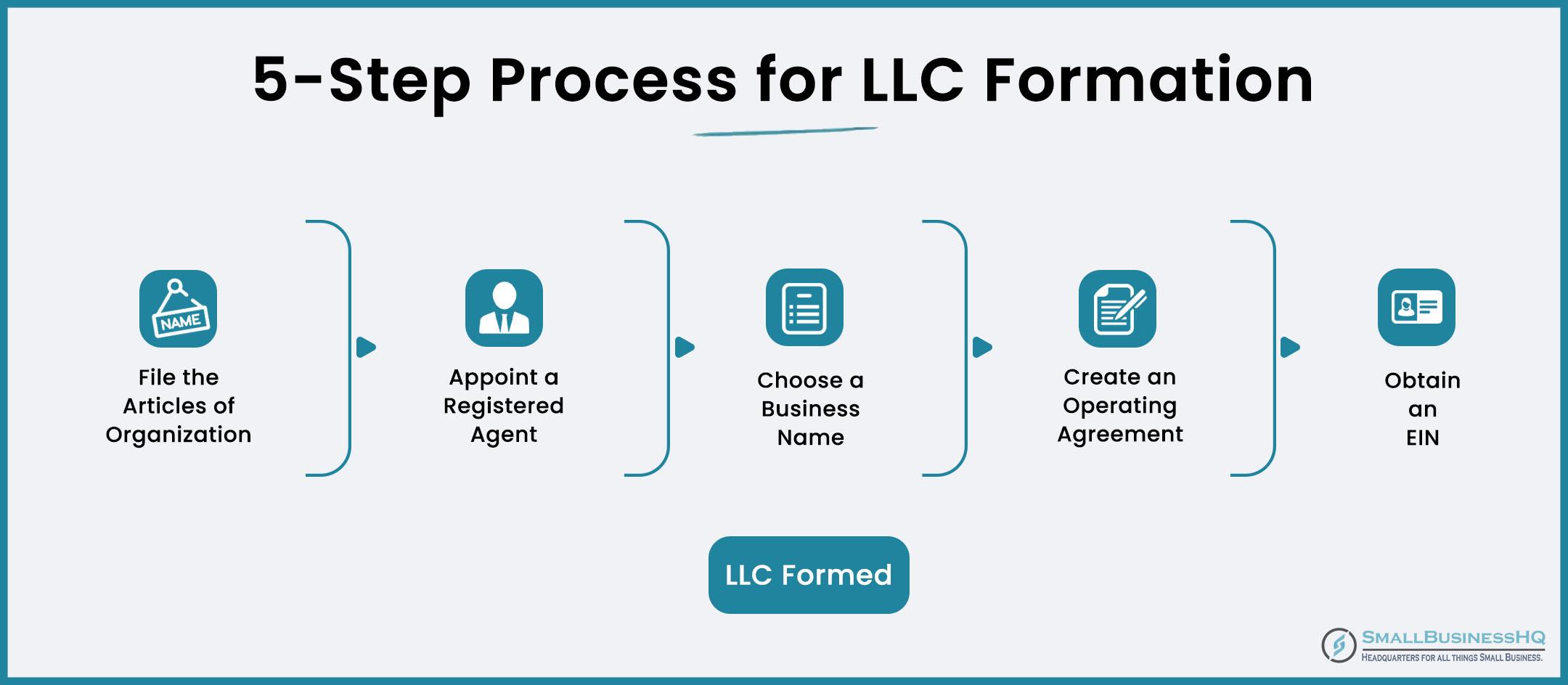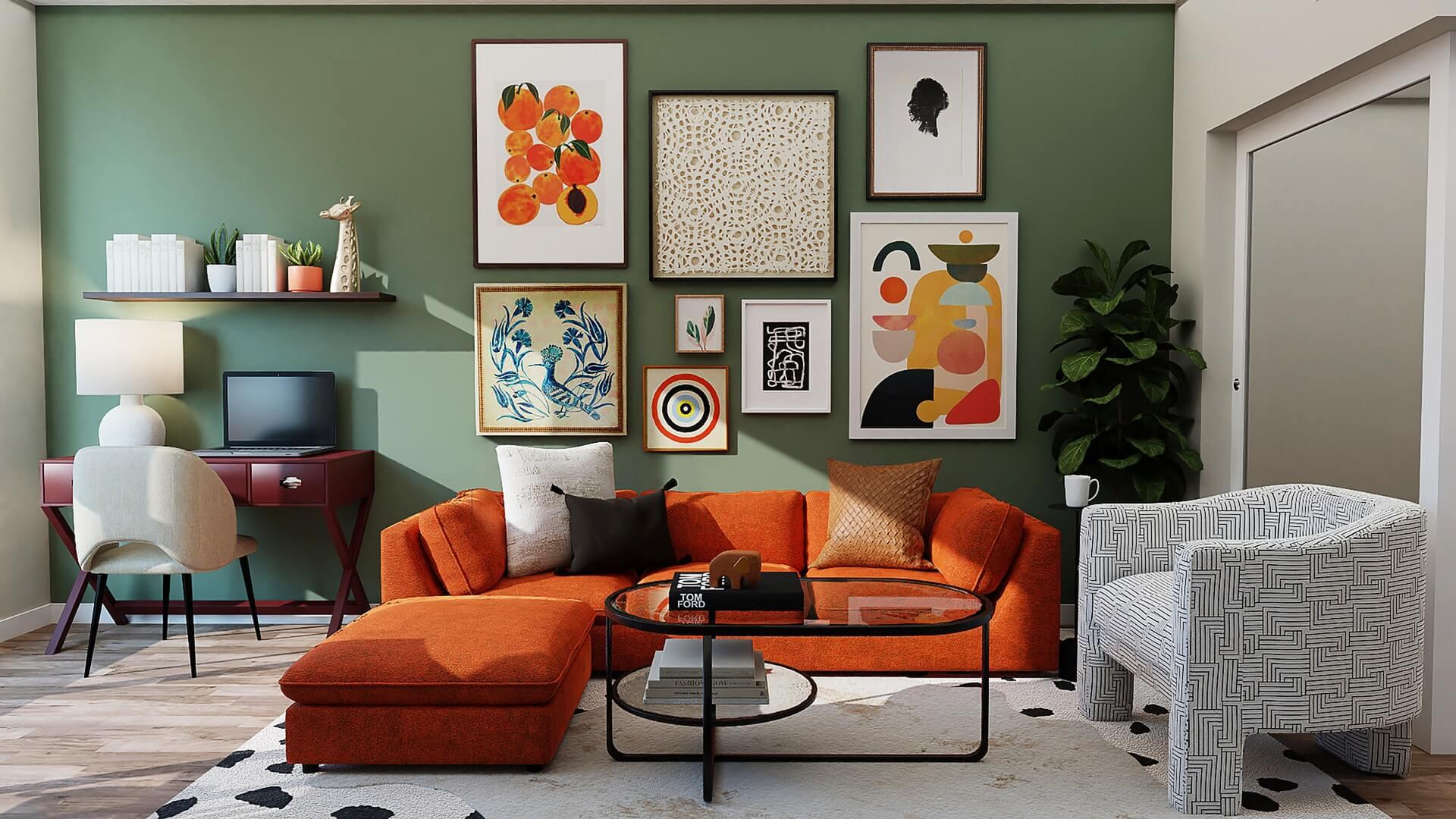
Introduction
Have you ever dreamt of turning your passion for design and craftsmanship into a thriving business? If so, you’re not alone! The furniture industry is not just about creating functional pieces; it’s about crafting experiences and expressing personal style. Whether you’re inspired by modern minimalism, rustic charm, or vintage flair, there’s a wealth of opportunity waiting for you in the world of furniture.
In this ultimate guide, we’ll walk you through everything you need to know to kickstart your very own furniture business in [current_year]. From understanding market trends and sourcing materials to mastering branding and marketing strategies, we’ve got you covered. Imagine seeing your creations in homes across the country, or better yet, becoming a go-to name in your community for unique, high-quality furniture.
So, grab a cup of coffee, get comfy, and let’s dive into the exciting journey of building a furniture business from the ground up. Your dream of becoming a furniture entrepreneur is about to become a reality!
Understanding the Furniture Market Trends Today
The furniture market is undergoing a significant transformation, driven by shifts in consumer behavior, technological advancements, and sustainability concerns. As you embark on your journey to start a furniture business, understanding these trends is crucial to positioning your brand for success.
One noticeable trend is the increasing demand for sustainable furniture. Consumers are more environmentally conscious than ever, seeking products that are made from renewable materials and produced through ethical practices. This trend presents a fantastic opportunity for new businesses to differentiate themselves by offering eco-friendly options. Consider incorporating materials such as reclaimed wood, bamboo, or recyclable metals into your designs.
The rise of e-commerce has also changed how furniture is sold. With more consumers shopping online, having a strong online presence is essential. Invest in creating a user-friendly website that showcases your products with high-quality images and detailed descriptions. Additionally, consider implementing augmented reality (AR) features that allow customers to visualize how your furniture will look in their space before making a purchase.
Furthermore, personalization is becoming a significant factor in consumer purchasing decisions. Shoppers want furniture that reflects their unique style and fits their specific needs. Offering customizable options, such as fabric choices or modular designs, can help attract customers looking for that personal touch. Highlight the ability to tailor products to individual preferences in your marketing strategies.
In terms of design aesthetics, minimalism continues to reign supreme. The modern consumer often favors sleek, functional pieces that complement minimalist interiors. Focus on creating furniture that emphasizes clean lines and versatile functionality, appealing to those who value simplicity and practicality in their living spaces.
As you consider these trends, it’s also vital to keep an eye on pricing strategies. With the rising cost of materials, consumers expect quality but are also price-sensitive. Conduct market research to find the sweet spot where you can offer competitive prices while maintaining profit margins. A detailed pricing table can help you track your costs and set strategic prices.
| Material Type | Cost per Unit | Environmental Impact |
|---|---|---|
| Reclaimed Wood | $50 | Low |
| Bamboo | $40 | Very Low |
| Sustainable Fabric | $30 | Low |
| Recyclable Metal | $60 | Medium |
Lastly, consider how social media can serve as a powerful marketing tool for your furniture business. Platforms like Instagram and Pinterest are ideal for showcasing your designs and connecting with potential customers. Create engaging content that highlights your products, shares behind-the-scenes looks at your process, and tells the story of your brand’s commitment to quality and sustainability.
By staying attuned to these trends and adapting your business model accordingly, you can carve out a niche in the competitive furniture market. Embrace innovation, prioritize sustainability, and focus on building a strong online presence to set your furniture business apart from the rest.

Identifying Your Niche in the Furniture Industry
Finding the right niche in the furniture industry is crucial for your business’s success. It allows you to focus your efforts and resources on a specific audience, making your marketing more effective and your products more appealing. Here are some steps to help you identify the niche that suits your passion and market demand.
Start by analyzing current trends in the furniture market. This involves:
- Researching Consumer Preferences: Look into what styles, materials, and functionalities are currently in demand. Are consumers leaning towards sustainability? Or are they more interested in luxury and comfort?
- Identifying Gaps in the Market: What isn’t being offered? Perhaps there’s a lack of affordable, stylish options for small apartments, or a demand for eco-friendly materials.
- Monitoring Competitors: Take a close look at what your competitors are doing. This can provide insights into successful strategies and areas where you can innovate.
Once you’ve gathered information, consider your own strengths and passions. What type of furniture resonates with you? Whether it’s handcrafted pieces, modern minimalist designs, or vintage restoration, aligning your niche with your interests can lead to greater satisfaction and authenticity in your work.
Next, define your target audience. Ask yourself:
- Who are they? Are they young professionals, families, or retirees?
- What are their buying habits? Do they prefer online shopping or in-store experiences?
- What values do they hold? Is sustainability important to them? Are they looking for budget-friendly options or willing to invest in high-end furniture?
To further refine your niche, consider creating a SWOT analysis. This will help you evaluate your:
| Strengths | Weaknesses |
|---|---|
| Unique designs or craftsmanship | Limited marketing budget |
| Strong supply chain relationships | Lack of industry experience |
| Opportunities | Threats |
|---|---|
| Growing e-commerce market | High competition |
| Consumer interest in sustainable furniture | Economic downturn affecting spending |
As you refine your niche, remember that flexibility is key. The furniture industry is dynamic, and consumer preferences can shift. Be prepared to adapt your offerings based on feedback and market changes.
don’t underestimate the power of community. Engaging with local craftsmen, attending industry events, and participating in online forums can provide valuable insights and help you stay ahead of trends. Building relationships can also lead to collaborations that enhance your brand’s visibility and credibility.
Crafting a Solid Business Plan for Your Furniture Business
Starting a furniture business without a solid business plan is like building a house without a blueprint. A well-structured business plan will serve as your roadmap, guiding you through the initial stages and ensuring that you stay on track as your business grows. Here are the essential components you should include in your plan:
Executive Summary
This is the first section of your business plan, but it’s often written last. It should provide a concise overview of your furniture business, including your mission statement, the products you’ll offer, and your target market. Make it compelling to grab the attention of potential investors or partners.
Market Analysis
Understanding your market is crucial. Conduct thorough research to identify:
- Your target audience: Who are your ideal customers? Consider demographics, preferences, and buying behavior.
- Competitors: Analyze your competitors’ strengths and weaknesses. What can you offer that they don’t?
- Market trends: Stay updated on current design trends and consumer preferences in the furniture industry.
Products and Services
Detail the types of furniture you plan to sell. Will you focus on custom designs, eco-friendly materials, or affordable options? Be specific about your offerings, as this section will help potential investors understand what sets your business apart.
Marketing Strategy
Your marketing strategy is how you will attract and retain customers. Consider implementing:
- Social Media Marketing: Utilize platforms like Instagram and Pinterest to showcase your designs.
- Influencer Partnerships: Collaborate with influencers in home décor to reach a wider audience.
- Email Campaigns: Keep potential customers informed about new products and promotions.
Financial Projections
Financial projections should be realistic and based on thorough market research. Include:
| Year | Projected Revenue | Expenses | Profit |
|---|---|---|---|
| Year 1 | $100,000 | $75,000 | $25,000 |
| Year 2 | $150,000 | $90,000 | $60,000 |
| Year 3 | $200,000 | $110,000 | $90,000 |
Operations Plan
Detail how your furniture business will operate on a day-to-day basis. This should include:
- Location: Where will your business be based? A physical store, online, or both?
- Suppliers: Who will provide your materials? Establish reliable relationships for quality and cost-effectiveness.
- Staffing: Will you need to hire employees? Outline roles and responsibilities.
By carefully crafting each section of your business plan, you’re not just preparing for potential investors; you’re setting yourself up for success in the volatile world of furniture retail. Remember, a well-thought-out plan is a living document that can evolve as your business does, but it should always serve as your guiding framework.
Choosing the Right Business Structure for Success
When you embark on the exciting journey of starting a furniture business, one of the first crucial decisions you’ll face is selecting the right business structure. Choosing the appropriate legal framework can significantly impact your operations, taxes, liability, and overall success. Let’s explore the common business structures, their pros and cons, and help you find the perfect fit for your new venture.
Here are the most popular business structures to consider:
- Sole Proprietorship: This is the simplest form of business entity, perfect for solo entrepreneurs. It offers complete control but comes with unlimited personal liability.
- Partnership: If you’re teaming up with another person, a partnership allows for shared decision-making and resources. However, both partners are personally liable for business debts.
- Limited Liability Company (LLC): An LLC combines the benefits of a corporation and a partnership. It protects personal assets from business liabilities while providing flexible tax options.
- Corporation: This structure is ideal for larger businesses planning to grow or attract investors. While it offers liability protection, it comes with more regulatory requirements and potential double taxation.
To help you visualize the differences and make an informed decision, here’s a simple comparison table:
| Business Structure | Liability | Taxation |
|---|---|---|
| Sole Proprietorship | Unlimited personal liability | Personal income tax |
| Partnership | Unlimited personal liability | Personal income tax |
| LLC | Limited liability | Pass-through taxation |
| Corporation | Limited liability | Double taxation (corporate and personal) |
When determining which structure fits your furniture business best, consider factors such as your long-term goals, the number of owners, and the level of acceptable risk. If you aim to keep things simple and have full control, a sole proprietorship may be the way to go. However, if you are looking to grow and protect your personal assets, an LLC could be more suitable.
Additionally, think about the regulatory requirements in your area. Some structures may require more paperwork, compliance, and ongoing fees. Be sure to research your local laws and seek professional guidance if needed, as this can save you time and frustration down the road.
Ultimately, the right business structure will not only align with your immediate needs but also support your long-term vision. A well-thought-out decision here can pave the way for a thriving furniture business that stands the test of time.

Finding Reliable Suppliers and Manufacturers
Establishing a successful furniture business largely hinges on your ability to find trustworthy suppliers and manufacturers. The right partners can make all the difference in the quality and appeal of your products. Here are some solid strategies to help you uncover reliable sources:
1. Research Online Directories: Start your search by exploring reputable online directories that specialize in connecting businesses with suppliers. Websites like Alibaba, ThomasNet, and Maker’s Row can offer a wealth of information. Filter your search based on criteria such as location, product type, and customer reviews.
2. Attend Trade Shows: Industry trade shows are a goldmine for networking. By attending these events, you’ll meet manufacturers face-to-face, allowing you to assess their products and capabilities. Take the time to engage with various suppliers, ask questions, and build relationships that could lead to fruitful partnerships.
3. Leverage Local Resources: Don’t overlook local manufacturers. Often, sourcing furniture from nearby suppliers can be beneficial in terms of shipping costs and delivery times. Check local business directories or chamber of commerce listings to identify manufacturers in your area.
4. Evaluate Samples: Before committing to any supplier, request samples of their products. It’s essential to inspect quality firsthand and ensure that the materials meet your standards and expectations. This step can save you significant headaches down the road.
5. Check References: Always ask for references from potential suppliers. Speaking with other businesses that have previously worked with them can provide insights into reliability, quality, and customer service. This feedback is invaluable and can guide your decision-making.
6. Understand Their Production Capabilities: Not all manufacturers have the same capabilities. Some may specialize in large-scale production, while others focus on custom pieces. Ensure that your chosen supplier can meet your production needs without compromising quality or timelines.
7. Negotiate Terms: Once you identify potential suppliers, it’s time to discuss terms. Don’t be afraid to negotiate prices, minimum order quantities, and payment terms. A mutually beneficial agreement lays the groundwork for a strong, long-term business relationship.
| Key Attributes | Questions to Ask |
|---|---|
| Quality | What quality control measures do you have in place? |
| Delivery Time | What is your typical lead time for orders? |
| Pricing | Can you provide a detailed quote? |
| Communication | How do you handle customer inquiries? |
| Flexibility | Are you open to custom orders? |
By implementing these strategies and building solid relationships with your suppliers, you can secure the backbone of your furniture business. Remember, a reliable supplier not only ensures the quality of your products but also supports your growth and success in the competitive furniture market.
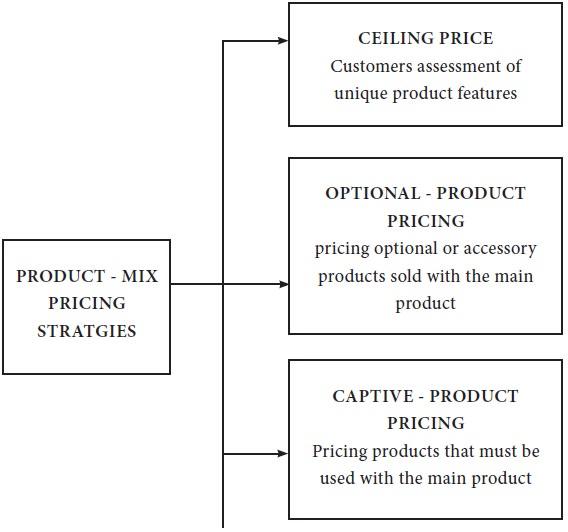
Designing Your Unique Product Line
Creating a unique product line is the cornerstone of establishing your furniture business. It’s not just about crafting beautiful items; it’s about telling a story that resonates with your target audience. To set yourself apart, you’ll want to focus on the following key elements:
- Identify Your Niche: Start by defining what makes your pieces unique. Are you focusing on sustainable materials, minimalist designs, or perhaps vintage-inspired furniture? Knowing your niche helps you attract the right customers.
- Research Market Trends: Pay attention to current trends in the furniture market. Browse through design magazines, visit trade shows, and follow influencers on social media to gather insights on what’s hot right now.
- Understand Your Audience: What does your ideal customer value? Are they looking for durability, aesthetics, or multifunctional pieces? Surveys and focus groups can help you gather valuable feedback.
- Create a Cohesive Collection: Your product line should feel like a family. Ensure that your furniture pieces share a common theme, whether it’s through color, materials, or design style, to create a visually appealing collection.
Once you have a clear vision, it’s time to start sketching and prototyping. Consider collaborating with designers who can bring your ideas to life. Don’t hesitate to explore unconventional materials or innovative designs; this is where true creativity shines. Remember, the furniture market is saturated, so the more unique your offerings, the better your chances of standing out.
Here’s a simple table to summarize the essential steps for designing your product line:
| Step | Description |
|---|---|
| 1. Research | Analyze market trends and customer preferences. |
| 2. Define Niche | Identify what sets your furniture apart. |
| 3. Sketch Designs | Create initial drafts of your furniture pieces. |
| 4. Prototype | Develop physical models to test functionality and appeal. |
| 5. Gather Feedback | Use focus groups to refine your designs. |
As you finalize your product line, don’t forget about branding. Your brand should reflect the values and vision behind your furniture designs. Create a compelling narrative that explains the inspiration behind your pieces. This storytelling element not only enhances customer engagement but also builds loyalty.
Lastly, consider the logistics of production. Partner with quality manufacturers who share your vision and can help bring your designs to life without compromising on quality. Establishing strong relationships with suppliers will not only ensure consistency in your product line but also provide opportunities for collaborative innovation.

Setting Up Your Workspace: Storefront or Online
When embarking on your furniture business journey, one of the first critical decisions you’ll face is whether to establish a physical storefront or an online presence. Each option has its own set of advantages and challenges, and choosing the right one can set the tone for your success.
Evaluating Your Audience
Understanding your target market is essential. Consider factors like:
- Demographics: Are your ideal customers more likely to shop in-store or online?
- Shopping Behavior: Do they prefer the tactile experience of touching and trying out furniture, or are they comfortable making purchases online?
- Local Competition: What are your local competitors doing? A unique storefront might set you apart, while a robust online strategy could help you capture a wider audience.
Benefits of a Physical Storefront
A physical location offers several unique benefits:
- Hands-On Experience: Customers can see, touch, and try out furniture, which can significantly boost their confidence in purchasing.
- Brand Awareness: A well-designed storefront can enhance your brand’s visibility and create an inviting atmosphere.
- Instant Customer Feedback: Interacting face-to-face allows you to gather immediate feedback and build relationships with your customers.
Advantages of Going Online
On the other hand, an online presence can provide unmatched flexibility:
- Lower Overheads: Operating online significantly reduces costs associated with rent, utilities, and in-store staffing.
- Broader Reach: An online store can attract customers from anywhere, exponentially increasing your market size.
- 24/7 Availability: Your store is open around the clock, allowing customers to shop whenever it’s convenient for them.
Hybrid Approach
Many successful furniture businesses find a sweet spot by combining both storefront and online strategies. This hybrid model allows you to:
- Drive Traffic: Use your physical location to drive online sales and vice versa. Promote your online store in your physical store through flyers or QR codes.
- Enhance Customer Experience: Offer in-store pickups for online orders, allowing customers to experience both shopping methods.
- Cross-Promote: Build a loyal community that engages with your brand on multiple platforms.
Cost Comparison Table
| Aspect | Storefront | Online |
|---|---|---|
| Initial Setup Costs | High | Medium |
| Monthly Overheads | High | Low |
| Customer Reach | Local | Global |
| Customer Interaction | Personalized | Remote |
the choice between a storefront and an online presence boils down to your business goals, target audience, and resources. Careful evaluation and strategic planning will help you create a workspace that aligns with your vision for success.
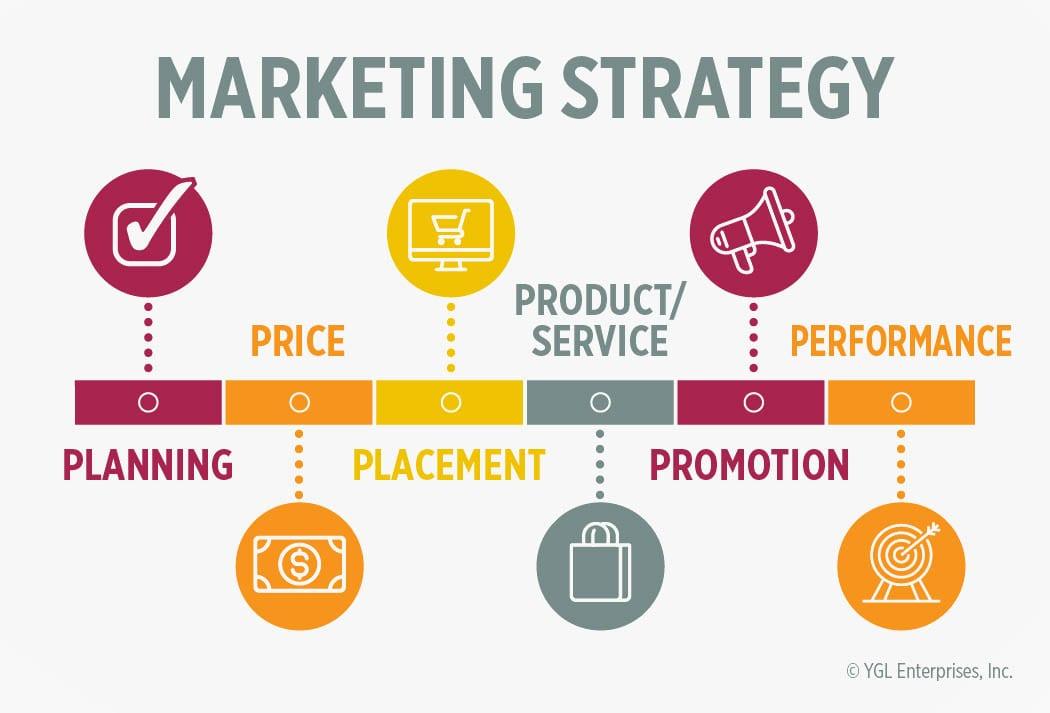
Effective Marketing Strategies to Attract Customers
Building a successful furniture business requires more than just great products; it demands a robust marketing strategy that resonates with your target audience. Here are some proven methods to help you draw customers in and keep them coming back for more.
Leverage Social Media Platforms
Social media is a powerful tool for any business, especially when it comes to showcasing furniture designs. Platforms like Instagram, Pinterest, and Facebook allow you to display your products visually. Consider the following:
- Share high-quality images of your furniture in well-styled settings.
- Utilize engaging stories and reels to demonstrate the functionality of your pieces.
- Run targeted ads to reach specific demographics interested in home decor.
Email Marketing Campaigns
Don’t underestimate the power of a personalized email. Building an email list allows you to maintain direct contact with potential and existing customers. Here’s how to make it work for you:
- Send out newsletters featuring new arrivals, promotions, and design tips.
- Offer exclusive discounts to subscribers to encourage conversions.
- Segment your list to tailor content based on customer preferences and past purchases.
Content Marketing
Creating valuable content can position your brand as an authority in the furniture industry. Start a blog on your website where you can share:
- Home decorating tips and DIY projects.
- Insights into furniture trends and materials.
- Case studies or stories from satisfied customers.
Collaborations and Partnerships
Partnering with local businesses or influencers can boost your visibility significantly. Consider collaborations that make sense, such as:
- Teaming up with real estate agents to stage homes.
- Working with interior designers to showcase your furniture in their projects.
- Hosting workshops or events that attract potential customers to your showroom.
SEO Optimization
Your website should be easily discoverable by potential customers. Implement SEO strategies to improve your online presence:
- Use relevant keywords in your product descriptions and blog posts.
- Optimize your images with alt tags for better visibility in search results.
- Ensure your website is mobile-friendly for users browsing on the go.
Table of Effective Marketing Channels
| Marketing Channel | Effectiveness | Cost |
|---|---|---|
| Social Media | High | Varies (potentially low) |
| Email Marketing | Medium | Low |
| Content Marketing | High | Medium |
| Collaborations | Medium | Varies |
| SEO | High | Low (initial investment) |
By combining these strategies and adapting them to fit your unique business model, you’ll create a marketing approach that attracts customers and builds long-lasting relationships. Remember, the key is not just to reach potential customers, but to engage them meaningfully.

Building a Strong Brand Identity in the Furniture Market
Creating a distinctive brand identity in the competitive furniture market is essential for standing out and attracting customers. Your brand should reflect your core values, style, and the unique qualities of your products. Start by defining what makes your furniture business special. Is it the craftsmanship, sustainable materials, or innovative design? Identifying your unique selling proposition (USP) will help you craft a compelling brand narrative.
Next, develop a strong visual identity. This includes your logo, color palette, and typography. These elements should resonate with your target audience and communicate the essence of your brand. For instance, a brand that focuses on modern, sleek furniture might use minimalistic designs and a monochromatic color scheme, while a company selling rustic, handcrafted pieces may opt for earthy tones and textured fonts.
Consistency is key when it comes to branding. Ensure that your visual identity is reflected across all platforms, from your website and social media to your packaging and in-store displays. This uniformity helps build recognition and trust with your audience. Here are some areas to maintain consistency:
- Website Design: Use your brand colors and fonts throughout.
- Social Media Profiles: Showcase your logo and maintain a cohesive theme.
- Marketing Materials: Flyers, brochures, and business cards should all align with your brand identity.
Next, focus on your brand voice. This is how you communicate with your audience, whether through social media posts, blog articles, or customer service interactions. Your voice should align with your brand personality—be it friendly, authoritative, or playful. Engage your customers by sharing stories about your products, the inspiration behind them, or how they can enhance their living spaces.
Building an emotional connection with your customers can also enhance brand loyalty. Consider storytelling techniques that highlight the craftsmanship, sustainability, or innovative designs behind your furniture. Create campaigns that resonate with your audience’s aspirations and lifestyles, making them feel like they are part of the brand journey.
continuously gather feedback and adapt. Use surveys, social media interactions, and sales data to understand customer preferences and perceptions. This insight allows you to refine your brand identity over time, ensuring it remains relevant and appealing in a dynamic market.
To visualize some of the elements that contribute to a strong brand identity, consider the following table:
| Brand Element | Description |
|---|---|
| Logo | A unique visual symbol representing your brand. |
| Color Palette | A set of colors that reflect your brand’s personality. |
| Typography | The style of fonts used across all communications. |
| Brand Voice | The tone and style of your written content. |
| Customer Engagement | Building relationships through social media and feedback. |
By focusing on these aspects, you can craft a robust brand identity that resonates with your target audience and sets your furniture business apart from the competition. Remember, a strong brand is not just about selling products; it’s about creating a lasting impression and fostering loyalty in your customers.

Leveraging Social Media to Boost Your Business
In the digital age, social media is more than just a platform for sharing photos and updates; it’s a powerful tool that can help you elevate your furniture business to new heights. Engaging with potential customers where they already spend their time can turn casual browsers into loyal buyers. Here are several strategies to effectively use social media for your business growth:
- Showcase Your Products: Use high-quality images and videos to display your furniture. Consider creating posts that highlight various angles, textures, and settings.
- Engage with Your Audience: Respond to comments and messages promptly. Ask questions to encourage interaction, turning your followers into a community.
- Utilize User-Generated Content: Encourage customers to share photos of your furniture in their homes. Reposting these images not only builds credibility but also fosters a sense of belonging among your customers.
- Run Contests and Giveaways: Create excitement around your brand. Contests can increase engagement and attract new followers, while giving away a piece of furniture can generate buzz.
- Leverage Influencer Collaborations: Partner with influencers in the home decor niche. Their endorsement can introduce your brand to a wider audience and build trust.
To maximize your reach, consider a well-planned content calendar. This allows you to maintain consistency in your posts and ensures that you are sharing diverse content types, such as tutorials, behind-the-scenes looks, and customer testimonials. Here’s a simple table to help you outline your social media strategy:
| Day | Content Type | Platform |
|---|---|---|
| Monday | Product Showcase | |
| Wednesday | Behind-the-Scenes | |
| Friday | Customer Feature | |
| Sunday | Live Q&A | Instagram Live |
Don’t forget to analyze your social media performance regularly. Use analytics tools available on most platforms to track engagement, reach, and conversion rates. This data will guide your strategy, helping you understand what resonates with your audience and what needs adjustment.
consider using paid social advertising to target specific demographics. Ads on platforms like Facebook and Instagram allow you to reach potential customers based on interests, location, and even behaviors, ensuring your product is seen by those most likely to purchase.
By harnessing the power of social media, you can effectively boost your furniture business, build a loyal customer base, and create a brand that resonates in the home decor market.

Navigating Legal Requirements and Permits
Starting a furniture business is an exciting venture, but before you dive into the creative process, you must ensure your legal foundation is solid. Understanding the necessary legal requirements and permits is vital for a smooth launch and long-term success.
First and foremost, you need to register your business. This involves choosing a business structure that suits your needs, whether it’s a sole proprietorship, partnership, LLC, or corporation. Each structure has different implications for liability and taxes, so it’s worth taking the time to research which one aligns best with your goals.
Once you’ve settled on a business structure, you’ll need to obtain the appropriate business licenses and permits. Depending on your location and the nature of your furniture business, this can include:
- General Business License: Required by most municipalities.
- Sales Tax Permit: Necessary if you plan to sell directly to consumers.
- Home Occupation Permit: If you’re working from home, this might be needed.
- Health and Safety Permits: Important if you’re manufacturing or refurbishing furniture.
Don’t forget to check the specific zoning laws in your area. These regulations could affect where you can operate your business, especially if you’re considering a storefront or workshop. Some areas may have restrictions on home-based businesses or require additional approvals.
Moreover, if you’re planning to hire employees, understanding employment laws is crucial. This includes compliance with labor laws, workplace safety regulations, and payroll tax obligations. Familiarizing yourself with the Fair Labor Standards Act (FLSA) can help you avoid potential pitfalls.
while it might seem daunting, it’s beneficial to consult with a legal professional who specializes in small businesses. They can guide you through the maze of regulations and help ensure that you haven’t overlooked any critical aspects. Here’s a simple breakdown of potential costs you might encounter:
| Type of Permit/License | Estimated Cost |
|---|---|
| General Business License | $50 – $400 |
| Sales Tax Permit | Varies by State |
| Home Occupation Permit | $100 – $300 |
| Health and Safety Permits | $100 – $1,000 |
By taking these steps and staying informed, you’ll not only comply with legal requirements but also build a reputable and trustworthy brand. This diligent preparation will set a solid foundation for your furniture business, allowing your creative ideas to thrive within a well-structured framework.
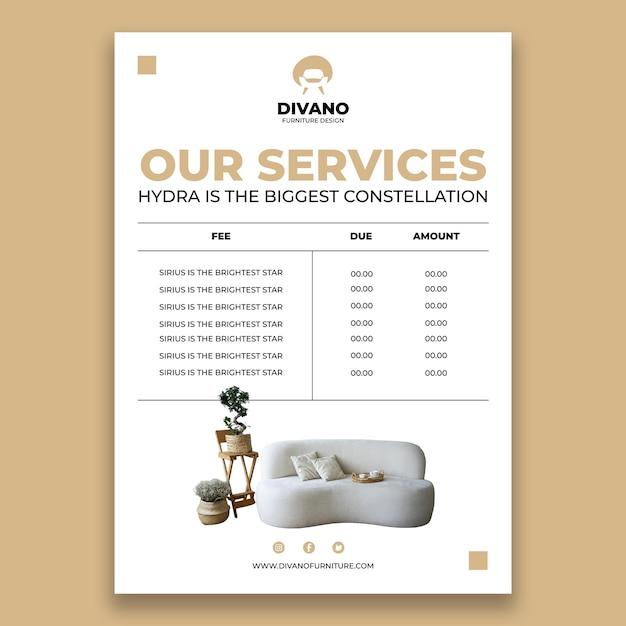
Pricing Your Furniture Competitively
When it comes to pricing your furniture, striking the right balance between affordability and profitability is key. A well-thought-out pricing strategy not only attracts customers but also ensures your business remains sustainable. Here are some essential strategies to consider:
- Understand Your Costs: Begin by calculating the total cost of producing your furniture. This includes materials, labor, overhead, and any additional expenses. A clear understanding of your costs will help you set a baseline price.
- Research Competitors: Take the time to analyze what similar businesses are charging for comparable products. This will give you a competitive edge and help you identify any market gaps.
- Consider Your Target Audience: Different demographics have varying price sensitivities. Tailoring your pricing to meet the expectations and budgets of your target audience is crucial. Luxury buyers might be willing to pay a premium, while budget-conscious shoppers will require a more competitive price.
Next, think about the overall value your furniture brings to customers. This can include the quality of materials, craftsmanship, design uniqueness, and even the brand reputation you’ve built. Establishing a strong value proposition can justify higher price points.
Another effective strategy is to implement tiered pricing structures. This allows you to offer products at different price ranges, capturing a broader audience. For instance, having a line of budget-friendly pieces alongside mid-range and high-end options can cater to various customers:
| Price Range | Target Audience | Product Examples |
|---|---|---|
| Under $300 | Budget-conscious shoppers | Basic chairs, simple tables |
| $300 - $700 | Middle-income families | Stylish sofas, dining sets |
| Over $700 | Luxury buyers | Custom-made furniture, designer pieces |
Don’t overlook seasonal promotions and discounts. Limited-time offers can create urgency and help clear out inventory, allowing you to make room for new stock. Additionally, consider bundling items together to increase perceived value while maintaining competitive pricing.
Lastly, remain flexible and willing to adjust your prices based on market conditions and customer feedback. Staying attuned to both industry trends and consumer preferences will help you refine your approach over time, ensuring your furniture business remains competitive and profitable.

Delivering Excellent Customer Service to Drive Loyalty
In the highly competitive world of furniture retail, providing excellent customer service can be a game-changer. Customers are not just looking for a transaction; they are seeking an experience that makes them feel valued and appreciated. By focusing on key aspects of service, you can build loyalty that translates into repeat business and referrals.
Understanding Customer Needs
The first step in delivering outstanding service is to truly understand your customers’ needs. This involves actively listening to their preferences and concerns. Consider implementing strategies such as:
- Personalized Interactions: Tailor your communication and product recommendations based on individual customer profiles.
- Feedback Mechanisms: Encourage customers to share their thoughts through surveys or informal conversations, which can help to refine your offerings.
Creating a Knowledgeable Team
Your staff plays a crucial role in the customer experience. Investing in training ensures that your team is well-equipped to answer questions, provide recommendations, and solve problems efficiently. Here are some training focus areas:
- Product Knowledge: Ensure your team understands every detail about your furniture, from materials to design.
- Customer Engagement Techniques: Train your staff on how to connect with customers and build rapport.
Streamlining the Purchase Process
Simplifying the purchase journey can significantly enhance customer satisfaction. Consider these practical approaches:
- Easy Navigation: Make your online store user-friendly with clear categories and filters.
- Flexible Payment Options: Offer various payment methods to cater to different preferences.
After-Sales Support
Your relationship with customers doesn’t end once they make a purchase. Exceptional after-sales support can reinforce loyalty. Here’s how you can provide ongoing support:
- Follow-Up Communications: Send thank-you emails and check in to see how they’re enjoying their new furniture.
- Return and Exchange Policies: Clearly communicate your policies and make the process hassle-free.
Building a Community
Fostering a community around your furniture brand can create a sense of belonging among customers. Consider utilizing social media platforms to:
- Share Customer Stories: Highlight how your furniture fits into their lives.
- Host Events: Organize workshops or webinars related to interior design trends or furniture care.
By consistently delivering excellent customer service, you will not only drive loyalty but also create advocates for your brand. Happy customers are more likely to share their positive experiences, leading to organic growth through word-of-mouth. Embrace these strategies and watch your furniture business flourish!

Scaling Your Business: Tips for Sustainable Growth
Scaling a furniture business can be both exciting and challenging. As you set out to expand your operations, it’s important to maintain a focus on sustainable growth. Here are some actionable tips to help you navigate this journey.
Understand Your Market: Knowledge is power. Conduct thorough market research to identify trends, customer preferences, and competitive landscapes. Use your findings to tailor your offerings. A well-informed strategy will minimize risks and maximize opportunities.
Leverage Technology: Embrace technology to streamline operations. From inventory management software to e-commerce platforms, the right tools can enhance efficiency and improve customer experience. Consider investing in:
- Automated inventory systems
- Customer relationship management (CRM) software
- Social media marketing tools
Build a Strong Brand: Your brand is more than just a logo; it’s the story you tell and the values you represent. Create a compelling brand identity that resonates with your audience. Focus on:
- Quality and craftsmanship
- Unique design aesthetics
- Exceptional customer service
Optimize Your Supply Chain: A well-structured supply chain can significantly impact your bottom line. Work closely with suppliers to ensure quality materials and timely deliveries. Explore options for:
- Local sourcing to reduce transportation costs
- Diverse supplier networks to mitigate risks
- Bulk purchasing for better pricing
Invest in Marketing: As you scale, an effective marketing strategy is crucial. Focus on building an online presence and engage with your audience through various channels:
- Social media campaigns
- Email marketing
- Content marketing to showcase industry expertise
Monitor Financial Health: Keep a close eye on your finances to ensure sustained growth. Use tools to track expenses, revenue, and profitability. Create a budgeting plan to manage cash flow effectively. Here’s a simple financial overview table:
| Month | Revenue | Expenses | Profit |
|---|---|---|---|
| January | $15,000 | $10,000 | $5,000 |
| February | $20,000 | $12,000 | $8,000 |
| March | $25,000 | $15,000 | $10,000 |
Focus on Customer Retention: Gaining new customers is important, but retaining existing ones can be even more beneficial. Implement loyalty programs and encourage customer feedback. A happy customer is likely to return and refer others.
Scaling your furniture business requires a balanced approach. By focusing on sustainable growth strategies, you’ll not only expand your business but also create a lasting impact in the industry. Remember, growth doesn’t happen overnight—stay committed and persistent!
Frequently Asked Questions (FAQ)
Q&A: How to Start a Furniture Business: The Ultimate Guide (2023)
Q: Why should I consider starting a furniture business in 2023?
A: Great question! The furniture industry is booming, especially with the rise of e-commerce and the increasing demand for unique, sustainable pieces. People are spending more time at home and investing in their living spaces. Plus, if you have a passion for design and craftsmanship, this could be an incredibly rewarding venture!
Q: What’s the first step to take when starting my furniture business?
A: The very first step is to define your niche. Are you interested in modern, rustic, or perhaps eco-friendly furniture? Knowing your target audience will help you tailor your products and marketing efforts. Once you have that figured out, it’s time to create a solid business plan that outlines your vision, budget, and strategies.
Q: How much money do I need to start a furniture business?
A: Starting a furniture business can vary greatly in cost, but you can expect to invest anywhere from a few thousand to tens of thousands of dollars. This will depend on factors like materials, tools, workspace, and marketing. Remember, starting lean is often a smart strategy; you can always scale up as you grow!
Q: Is it necessary to have woodworking skills to succeed?
A: Not necessarily! While having skills in woodworking or upholstery is a huge advantage, there are many successful furniture businesses run by individuals who focus on design and sourcing. You can collaborate with skilled craftsmen or even explore dropshipping options to get started.
Q: What are the best ways to market my furniture business?
A: Oh, there are so many exciting avenues to explore! Social media platforms like Instagram and Pinterest are fantastic for showcasing your designs. You might also consider setting up an online store, participating in local crafts fairs, and leveraging word-of-mouth through satisfied customers. Don’t underestimate the power of storytelling — share the inspiration behind each piece!
Q: How important is sustainability in the furniture industry today?
A: Extremely important! Consumers are becoming increasingly conscious about where their products come from. Offering sustainable, ethically sourced furniture can set you apart from the competition and attract a loyal customer base. Plus, it’s a great way to contribute to environmental preservation!
Q: What are some common pitfalls to avoid when starting out?
A: A few common mistakes include underestimating costs, neglecting market research, and spreading yourself too thin by trying to do everything at once. Focus on your strengths, seek advice when needed, and stay adaptable. Learning from your mistakes is part of the process!
Q: How can I ensure my furniture business stands out in a crowded market?
A: To stand out, find your unique selling proposition (USP). What makes your furniture different? Is it your design approach, materials, or customization options? Highlight this in your marketing and be authentic in telling your brand’s story. Building a strong brand identity will also help you connect with customers on a deeper level.
Q: Any final tips for aspiring furniture entrepreneurs?
A: Absolutely! Stay passionate about your craft and be patient. Building a successful business takes time and hard work. Surround yourself with a supportive community, keep learning, and don’t hesitate to seek mentorship. Remember, every big business started small — your dream is within reach!
Feel free to reach out if you have more questions or need further insights. Let’s turn that idea into a thriving furniture business in 2023!
Concluding Remarks
As we wrap up our ultimate guide on starting a furniture business in currentyear, remember that every great journey begins with a single step. You’ve got the tools, the tips, and the insights needed to turn your passion for furniture into a thriving venture. Whether it’s crafting unique pieces in your garage, curating stylish finds for a storefront, or launching an online empire, the possibilities are endless!
Don’t let fear or doubt hold you back. Embrace your creativity, connect with your target audience, and stay adaptable in this ever-evolving market. Surround yourself with the right resources and seek out mentorship—there’s a wealth of knowledge out there just waiting for you to tap into.
So, what’s stopping you? Take that leap, put your ideas into action, and start crafting the furniture business of your dreams. Your passion could very well transform not only your life but the spaces and lives of your future customers. Here’s to your success in currentyear and beyond—let’s make your furniture business vision a reality! Happy building!



